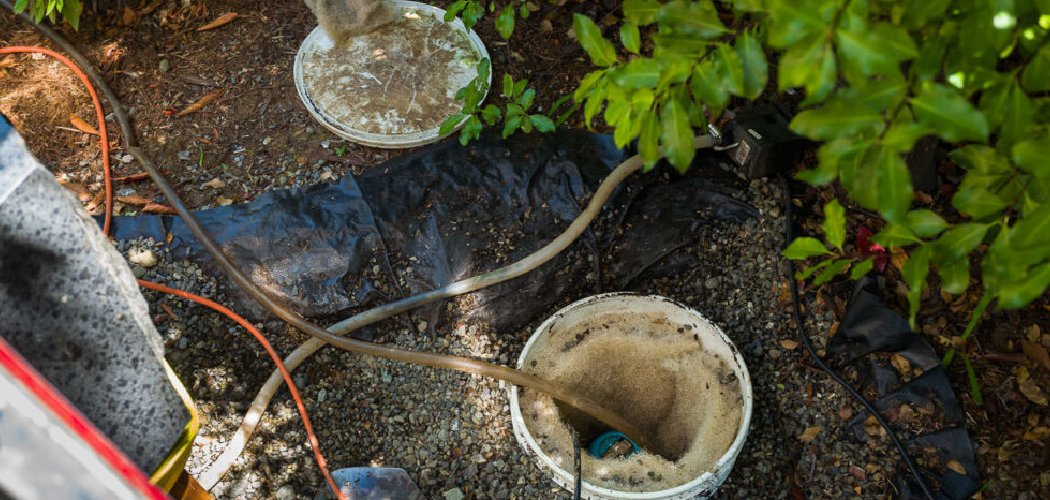Measuring the bathtub drain size is an essential step in ensuring the proper installation and functionality of your bathroom plumbing system. Whether you’re undertaking a renovation project or simply replacing an old drain, it is crucial to determine the correct measurements to avoid any issues with water flow or leakage.
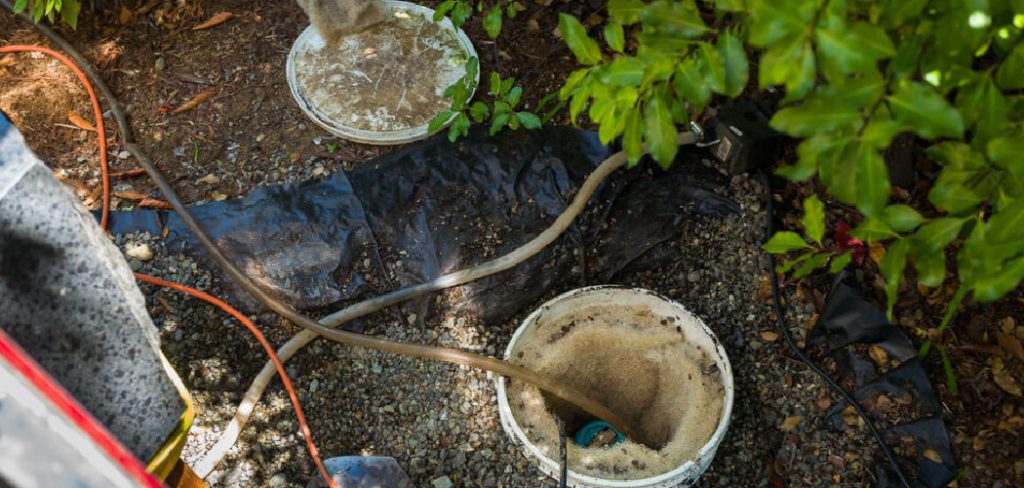
This guide on how to measure bathtub drain size will walk you through the various methods and tools required for accurately measuring your bathtub drain, helping you make informed decisions for your bathroom upgrade or repair. Armed with these measurements, you can confidently select the right components, ensuring a seamless fit and efficient drainage system.
What is a Bathtub Drain?
A bathtub drain is an integral part of your bathroom’s plumbing system, responsible for channeling used water away from the bathtub and into the sewage system. Typically located at the bottom of the bathtub, the drain features a stopper mechanism that allows you to hold water in for bathing and release it for drainage when needed.
Bathtub drains come in various designs, including pop-up, plunger, and trip-lever types, each with different mechanisms for controlling water flow. Understanding the type and size of your bathtub drain is crucial when considering replacements or upgrades, as this will ensure compatibility with your existing plumbing and minimize the potential for leaks or drainage issues.
Needed Materials
Before you begin measuring your bathtub drain, gather the following materials to ensure an accurate and efficient process:
Measuring Tape or Ruler:
A measuring tape or ruler is essential for obtaining precise measurements of your bathtub drain’s diameter and length. Make sure to use a tool with clear markings and a flexible body for ease of use in tight spaces.
Flashlight:
Since the bathtub drain is located underneath the tub, it may be challenging to see clearly without proper lighting. A flashlight will help you get a better view of the drain and its components, making it easier to take accurate measurements.
Pencil and Paper:
Having a pencil and paper handy will allow you to record your measurements as you go, avoiding any confusion or mistakes while taking them.
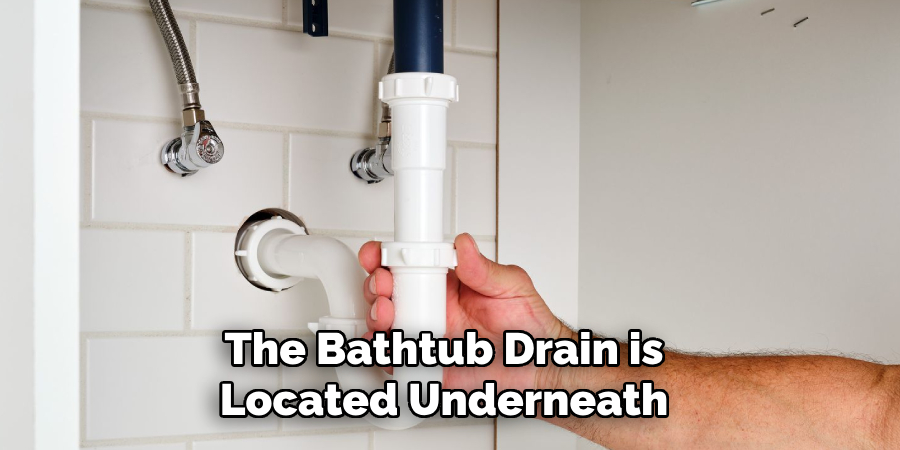
8 Step-by-step Guidelines on How to Measure Bathtub Drain Size
Step 1: Locate the Drain
The first step in measuring your bathtub drain size is to accurately locate the drain itself. Begin by removing any bath mats or coverings that may obstruct your view or access to the drain area. Once the bathtub is clear, identify the location of the drain at the bottom of the tub, which might be centrally positioned or slightly offset, depending on the design of your bathtub.
If the drain features a stopper, ensure it is open so you have full access to the drain’s opening. This preparation will facilitate a smoother and more precise measurement process.
Step 2: Measure the Diameter
Once you have located the bathtub drain, the next step is to measure its diameter. This measurement is crucial as it determines the size of the drain fitting you will need. Using a measuring tape or ruler, carefully measure across the widest part of the drain opening from one edge to the other. Ensure that your measuring tool is level and straight for the most accurate reading.
The diameter is typically measured in inches or centimeters. Record this measurement on your paper to reference it later when selecting compatible drain components or fittings.
Step 3: Measure the Length
After measuring the diameter, you will need to measure the length of your bathtub drain. This measurement is essential for determining the depth at which the drain sits in the bathtub and helps you select a suitable replacement or upgrade. Using your measuring tape or ruler, measure from just above the opening of the drain all the way down to where it meets the tub’s bottom surface. Make sure to record this measurement as well.
The length is also typically measured in inches or centimeters.
Step 4: Calculate Drain Circumference
To ensure maximum accuracy, it is best to calculate the circumference of your bathtub drain by multiplying its diameter by Pi (π=3.14). This calculation will provide a more precise measurement for the drain’s opening, which may be slightly elliptical rather than perfectly circular. Record this measurement alongside your other recorded dimensions.
It is also essential to note that some bathtub drains may have varying diameters at different points along their length, so it may be necessary to measure at multiple locations and calculate the average circumference.
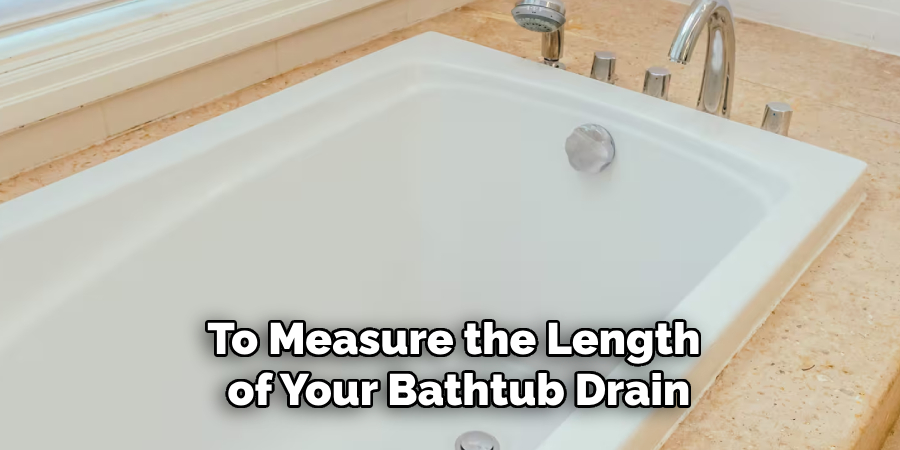
Step 5: Determine Type of Drain
Apart from measuring the physical dimensions of your bathtub drain, it is also crucial to determine its type. As mentioned earlier, there are several types of bathtub drains, including pop-up, plunger, and trip-lever mechanisms. Each type has a unique design and requires specific replacement parts or upgrades. Consult with a professional plumber or refer to manufacturer specifications to identify the exact type of drain you have in your bathtub.
The type of bathtub drain will also affect the compatibility of any replacement or upgrade options.
Step 6: Take Note of Additional Components
In addition to the main drain opening, your bathtub may also have additional components such as overflow drains or a strainer on top of the drain. It is essential to take note and measure these components as well, especially if you are considering replacing them along with the main drain. Measure their diameter and length just like you did for the main drain.
These additional components can also impact the overall size and compatibility of replacement parts or upgrades.
Step 7: Consult Professional Help If Needed
If you are unsure about any aspect of c, do not hesitate to seek professional help. A licensed plumber can provide expert advice and assist you in obtaining accurate measurements for your specific bathtub drain type. They can also guide you on selecting compatible replacement or upgrade options based on your measurements and other factors such as budget and personal preferences.
It is always better to seek expert guidance rather than risk incorrect measurements and compatibility issues with your plumbing.
Step 8: Keep Measurements Handy
After completing the measurement process, make sure to keep your recorded dimensions and calculations handy for future reference. This information will come in handy when shopping for replacement parts or upgrades, ensuring a smooth and hassle-free process.
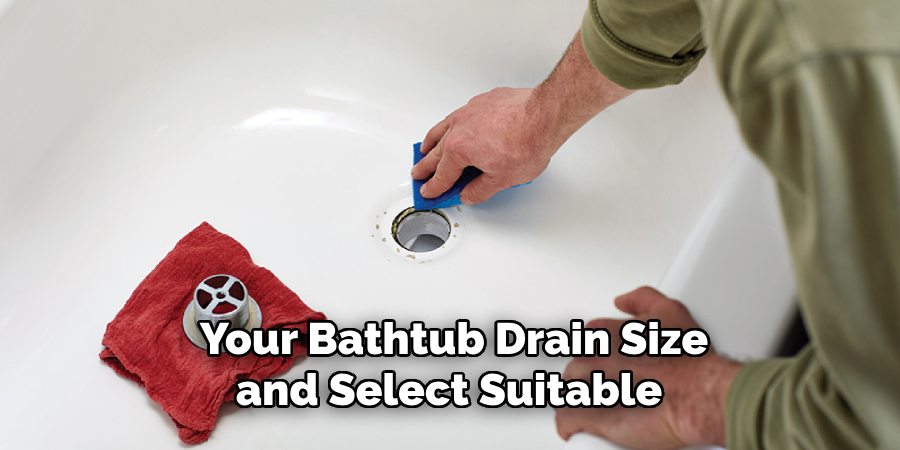
Following these step-by-step guidelines on how to measure bathtub drain size will help you accurately measure your bathtub drain size and select suitable replacement or upgrade options. It is always advisable to take your time and be precise while measuring to avoid any complications in the future. Happy plumbing!
Things to Remember
- Always Use a Measuring Tape or Ruler for Precise Measurements.
- Record Your Dimensions and Calculations Accurately.
- Consider the Type of Bathtub Drain You Have Before Selecting Replacement Parts or Upgrades.
- Seek Professional Help if Needed.
- Keep Your Measurements Handy for Future Reference.
- Take Your Time and Be Precise to Avoid Any Complications in the Future.
Frequently Asked Questions
Q: Can I Use a Ruler Instead of a Measuring Tape to Measure My Bathtub Drain Size?
A: Yes, you can use a ruler or any other measuring tool as long as it is accurate and provides precise measurements in inches or centimeters. However, a measuring tape may be more convenient for larger-diameter measurements.
Q: Why Do I Need to Calculate the Drain Circumference?
A: Calculating the drain circumference helps you obtain a more accurate measurement of your bathtub drain’s opening, especially if it is not perfectly circular. This calculation also takes into account any variations in diameter along the length of the drain.
Q: Can I Measure My Bathtub Drain Size Without Removing the Stopper?
A: It is best to remove the stopper before measuring your bathtub drain size to ensure full access and accuracy. However, if removing the stopper is not possible, you can measure around it and subtract its diameter from the overall measurement.
Q: Do I Need to Measure the Drain Size for Every Bathtub in My Home?
A: Yes, if all bathtubs in your home have different drains, you will need to measure each one individually to ensure compatibility with any replacement or upgrade options. However, if they are all identical, you can use the same measurements for each bathtub.

Conclusion
Accurately measuring your bathtub drain size is a crucial step in ensuring you select the right replacement or upgrade components. By following these detailed guidelines on how to measure bathtub drain size, you can confidently navigate the measurement process, from locating the drain to documenting all necessary dimensions. Remember that precision is key; taking the time to measure carefully will pay off by preventing compatibility issues and simplifying the installation of new parts.
If you encounter any challenges or uncertainties, don’t hesitate to seek advice from a professional plumber who can offer insights tailored to your specific situation. With your carefully recorded measurements in hand, you’ll be well-prepared to make informed decisions and enhance your bathtub’s functionality.

